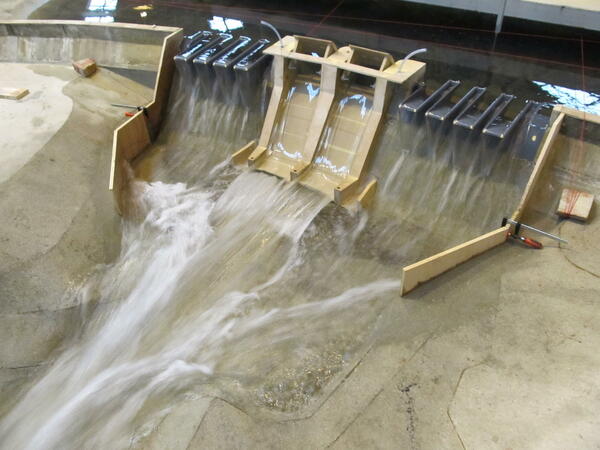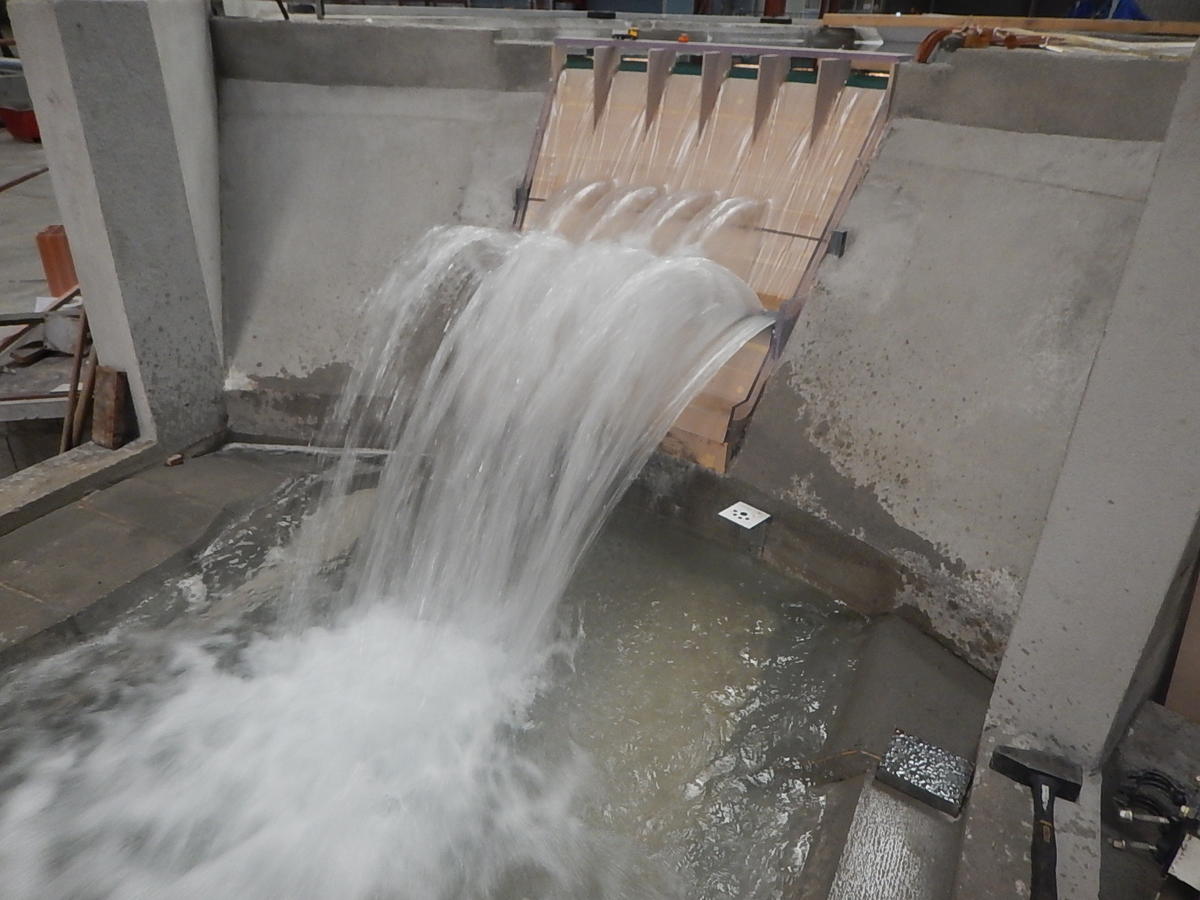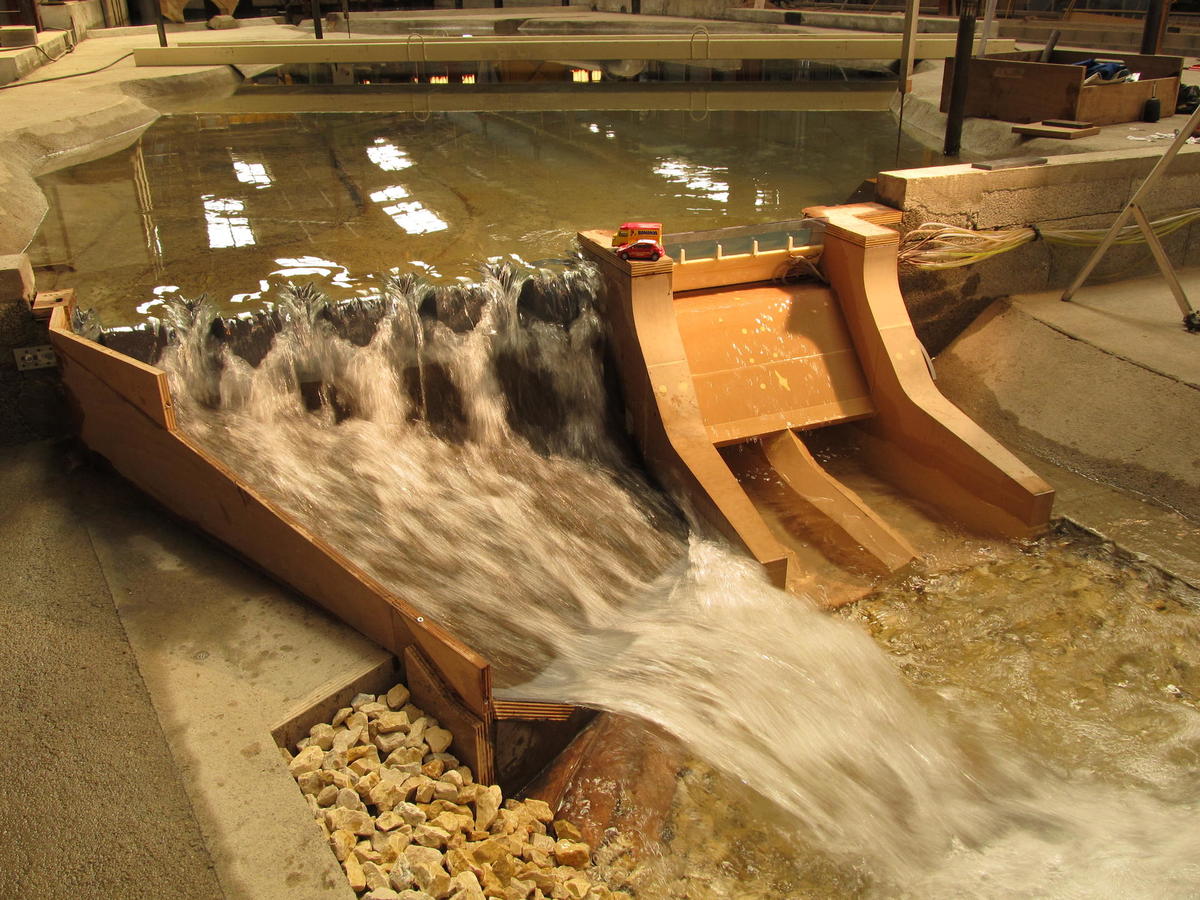
Flood spillways
Optimising and validating the design (new or rehabilitation) of flood spillways: a critical issue with regard to dam risk management.
What we do

Physical modelling is the best tool for checking and optimising the hydraulic design of these structures, and the entire profession (project owners, engineering consultants, control authorities, funding agencies) has used it continuously for more than 100 years, in spite of the emergence since the early 2000s of numerical modelling, which still tends to remain insufficient for certain technical aspects.
Physical modelling contributes a guarantee of satisfactory operation over the full range of the expected flow rates, detecting and correcting any possible hydraulic malfunctions that would not be seen in an analytical approach, and if necessary searching for the geometrical configuration that will be sufficient to ensure an adequate degree of safety, without excessive oversizing.
Our expertise
The physical model allows all the hydraulic aspects of the operation of a spillway to be explored, in particular the following main points:
- Discharge capacity of the structure: the "stage-discharge" relation for various degrees of opening of any movable components. This point in particular can be of great interest:
- for the dam design, potentially generating significant savings
- providing discharge charts for the future operator of the prototype structure
- Determination of water level profiles and changes in flow conditions (free surface, pressurised)
- Evaluation of energy dissipation and risk of scouring at the downstream toe
- Mesurement of forces and pressures
- Evaluation of sensitivity to floating debris
- Identification of areas of negative pressure on training walls or aprons
- etc.

Types of spillway studied
Physical modelling provides substantial technical added value for all spillway construction or rehabilitation projects:
- involving large dimensions or conveying large floods
- where there is potential to make real budget savings, but a need for reliable verification
- with a complex geometry and in which the dam - even if it is small - presents a particularly high safety concern. For example, the following structures are systematically tested using a hydraulic model:
- spillway equipped with fusegates
- nonlinear spillways, for example labyrinth or semi-labyrinth configurations
- Piano Key (PK) weirs
- spillways equipped with gates or flaps
- high-velocity pressure spillways
- morning glory spillways
- lateral spillways with the risk of submersion of the weir from the downstream side
- high velocity chute
- flip bucket spillway with a natural or concrete-faced stilling basin
- etc.

